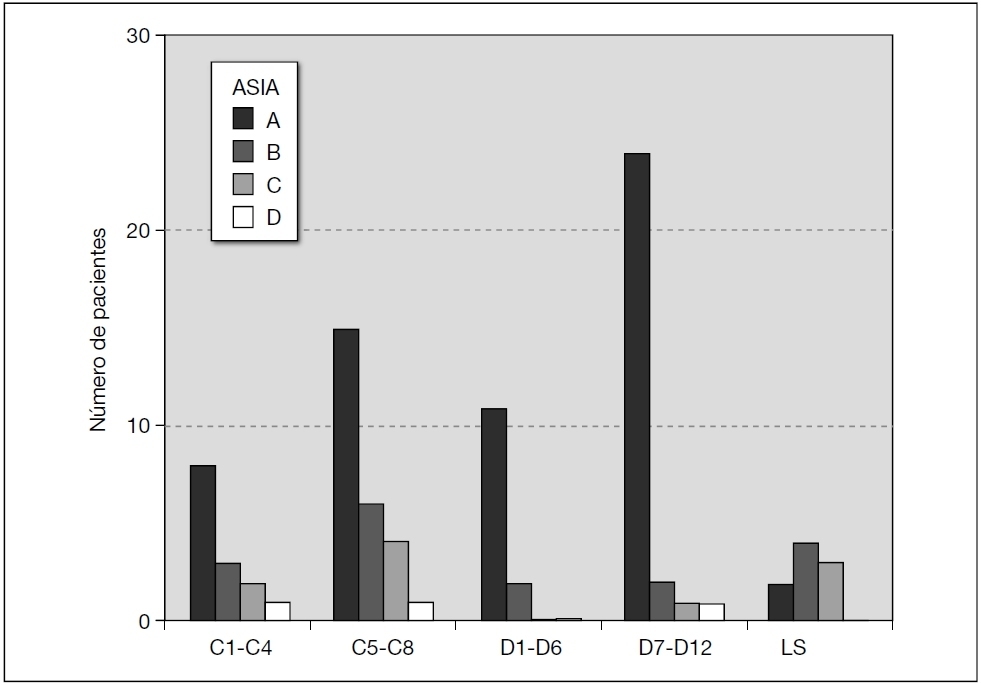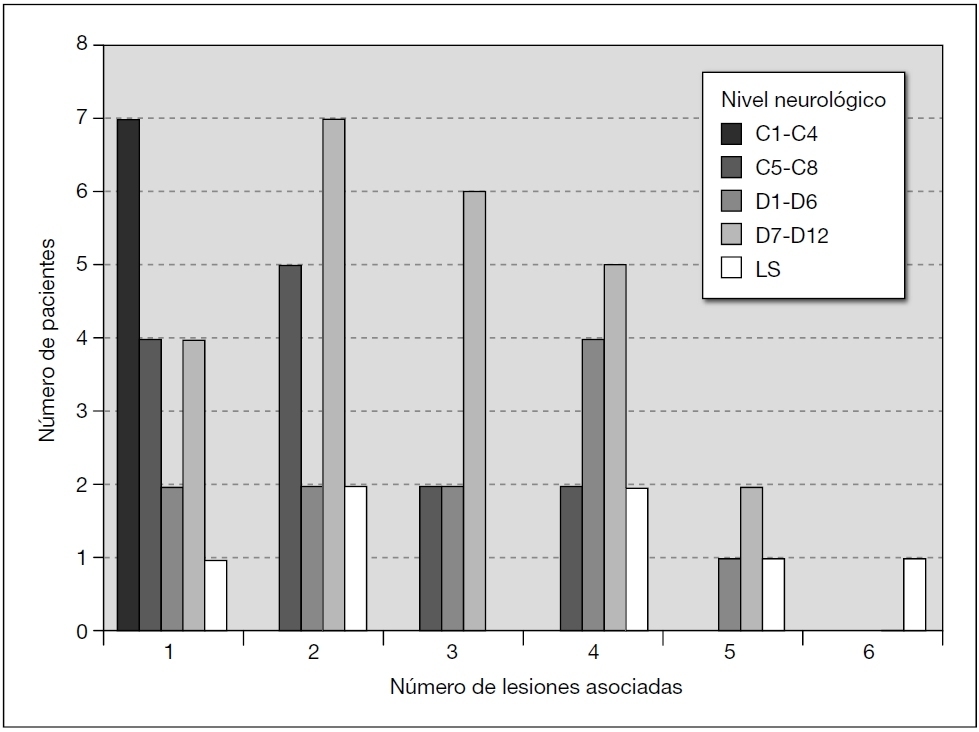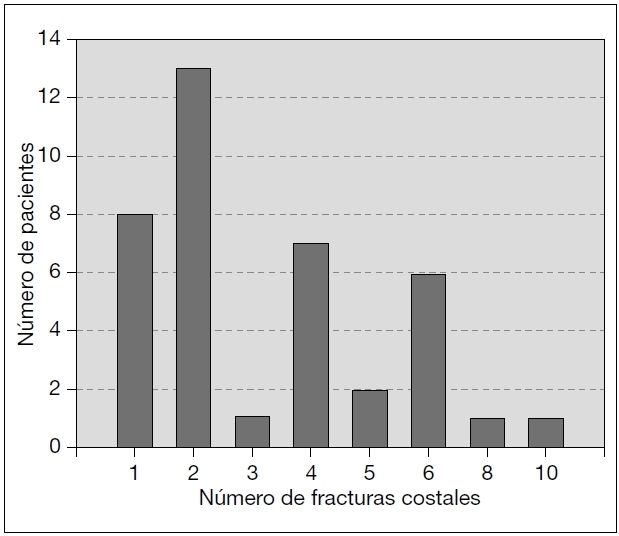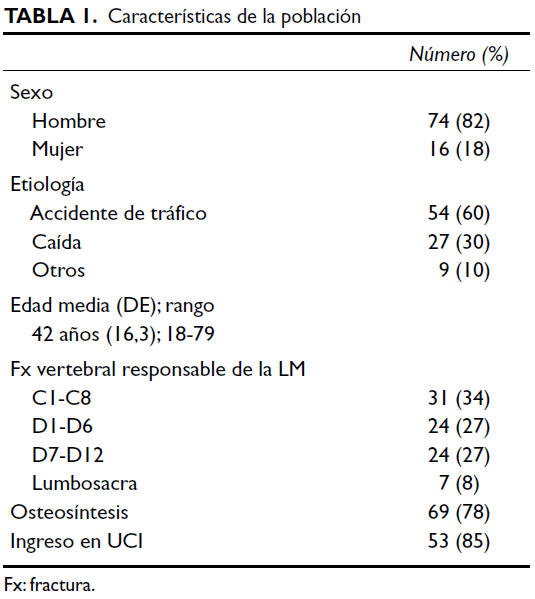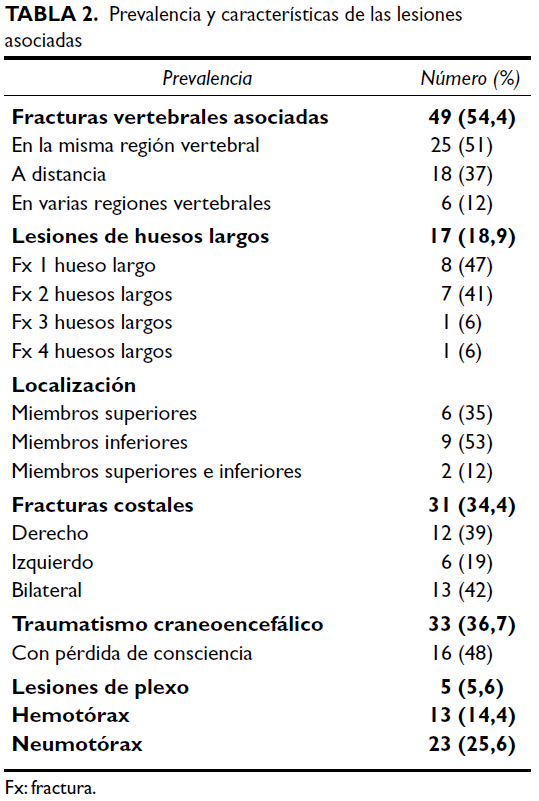Los traumatismos suelen ocasionar otras lesiones más allá de la lesión medular (LM) que pueden pasar desapercibidas en los primeros momentos, acarreando riesgo vital, retrasos en la recuperación funcional o aumento de la discapacidad. Los objetivos de este trabajo son determinar la prevalencia de las lesiones asociadas entre los pacientes que sufrieron una lesión traumática aguda, conocer su tipo y la relación con las variables epidemiológicas y con las complicaciones concurrentes durante el ingreso.
Material y método.Se realizó un estudio transversal en los pacientes ingresados en el Hospital Nacional de Parapléjicos, que presentasen LM traumática aguda, edad igual o superior a 18 años, haber sufrido al menos una lesión asociada simultánea a la LM y que no fueran dados de alta en la semana del estudio. De los 196 pacientes ingresados, se seleccionaron por lesión traumática 90, de los que 62 tenían lesiones asociadas agudas. Se evaluaron edad, género, etiología, prevalencia de lesiones óseas y viscerales, traumatismo craneoencefálico, hemotórax, neumotórax, lesiones de plexo y factores psicosociales.
Resultados.La prevalencia de lesiones asociadas fue 68,9 %. La edad media de estos pacientes fue significativamente menor. El género no se asoció a mayor vulnerabilidad para lesiones asociadas. Etiologicamente los tráficos doblaron a las caídas.Aquellos que sufrieron fractura o LM dorsal presentaron un número mayor de lesiones asociadas con significación estadística.
Conclusión.Las lesiones agudas asociadas deben ser siempre tenidas en cuenta en la valoración inicial por su prevalencia alta, especialmente si hay fractura o LM dorsal.
Traumatic patients afflicted with spinal cord injury (SCI) could have lesions in other anatomical regions.These lesions frequently receive delayed diagnosis and may increase the mortality risk, modify the course of recovery and produce worse functional outcomes.The aims of the present work is to determine the prevalence, etiology, epidemiology and complications of associated lesions in patients with acute traumatic SCI.
Material and methods.We perfomed a cross-sectional study of associated lesions in acute traumatic SCI patients admitted to the National Paraplegic Hospital of Toledo.The selection criteria were to suffer an acute traumatic SCI, to be older than eighteen years, to have at least one associated lesion concomitant with the SCI and not to be discharged during the time of acquisition data (one week). 90 out of 196 admitted patients had an acute traumatic SCI, 62 of them showing associated lesions.We obtained data regarding age, gender, etiology, prevalence of simultaneous visceral or bone lesions, traumatic brain injury, pneumothorax, hemothorax, braquial plexus injury and psychosocial profile.
Results.The prevalence of associated lesions in acute traumatic SCI patients was 68.9 % with a mean age lower than the reported in other series and without gender differences. Traffic accidents doubled in frequency to falls as cause of the SCI. Statistical test showed that the frequency of associated lesions was significantly in patients with thoracic SCI or thoracic vertebrae fractures, compared to patients with injuries at other spinal or vertebrae levels.
Conclusions.Taking into consideration the high prevalence of associated lesions in patients with acute traumatic SCI, it is of major importance to suspect them in the initial clinical assessment, particularly in patients with thoracic SCI or vertebral trauma.
Artículo
Comprando el artículo el PDF del mismo podrá ser descargado
Precio 19,34 €
Comprar ahora






